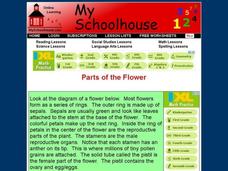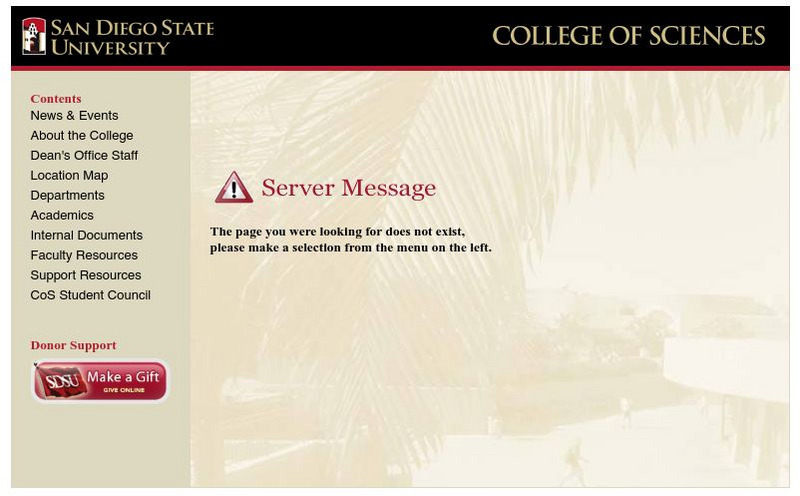Curated OER
Genetics
Students explain the difference between dominant and recessive genes, identify what causes differences in the traits of parents and their offspring, and explain how sex is determined. They will also improve their reading and...
Curated OER
Pregnancy and Differentiation
In this pregnancy activity, learners review the 5 steps of human development from ovulation to implantation plus embryo development. Students also review the 3 stages of birth. This activity has 8 fill in the blank, 4 drawing, and 3...
Serendip
Is Yeast Alive?
Through two investigations, life science learners determine whether or not yeast is alive. They perform tests for metabolism by providing sugar and observing if gas is produced as a byproduct. They incubate some of the sample for at...
Curated OER
Transcription, Translation, and the Genetics of Microbes
Students construct various virus models using Fruit loops and Alphabits to represent nucleotides and molecules. They constructs capsomeres using shoes as the capsomeres and discuss various viruses.
Curated OER
Improving Literacy in the Biology Classroom via Genetic Disorders
Students read, write and reflect on Science articles, this approach will promote both literacy and critical thinking skills. Critical thinking skills learned in the science classroom from these activities will impact students in many...
Curated OER
Parts of the Flower
For this biology worksheet, students examine a diagram of a flower and read a selection that describes all of the parts including the petals, the stamen, the anther, and the sepals. They answer 11 on-line fill in the blank questions...
Curated OER
Science Processes
Fifth graders observe a dry piece of bread and a damp piece of bread in two separate sealed bags that have been sitting for several days that have been labeled. The observe the mold with a hand lens and record findings in their science...
Curated OER
Breaking News English: Laboratory-Created Eggs and Sperm
For this English worksheet, students read "Laboratory-Created Eggs and Sperm," and then respond to 47 fill in the blank, 7 short answer, 20 matching, and 8 true or false questions about the selection.
Georgia Department of Education
Ga Virtual Learning: Biology: Cell Reproduction
Through informational text, interactive simulations, and step-through animations, students discover two major processes of cell reproduction; mitosis and meiosis.
CK-12 Foundation
Ck 12: Biology: Cell Division
[Free Registration/Login may be required to access all resource tools.] An overview of cell division in prokaryotes and eukaryotes.
BiologyWise
Biology Wise: Cell Division Stages
Clearly presents the steps in meiosis and mitosis with each step accompanied by an illustrated fact card.
Cornell University
Cornell University: Cell Division: Genetic Consequences
Review, identify, and describe the important steps in the cell reproduction of whitefish, onion root, and lily anther, and quiz yourself on the similarities and differences between mitosis and meiosis. A "Cell Division Construction Kit"...
Cold Spring Harbor Laboratory
Dna From the Beginning: All Cells Arise From Pre Existing Cells
This animated explanation introduces the concept of mitosis by reviewing the research of Walther Flemming.
BiologyWise
Biology Wise: Binary Fission Steps
The steps in binary fission during asexual reproduction are explained in this resource.
Biology 4 kids
Biology4 Kids: Meiosis It's for Sexual Reproduction
This informational text breaks down the progression of meiosis into a few simple steps.
San Diego State University
Sdsu: Lesson 2.5: How Do Organisms Reproduce? Meiosis
This site will allow students to grasp the complex concept of meiosis by modeling the process with clay.
Cosmo Learning
Cosmo Learning: Video: Mitosis in Real Time
Can you identify the steps of mitosis in this video? The video shows the process of the nucleus of a eukaryotic cell dividing in real time. [0:19]













